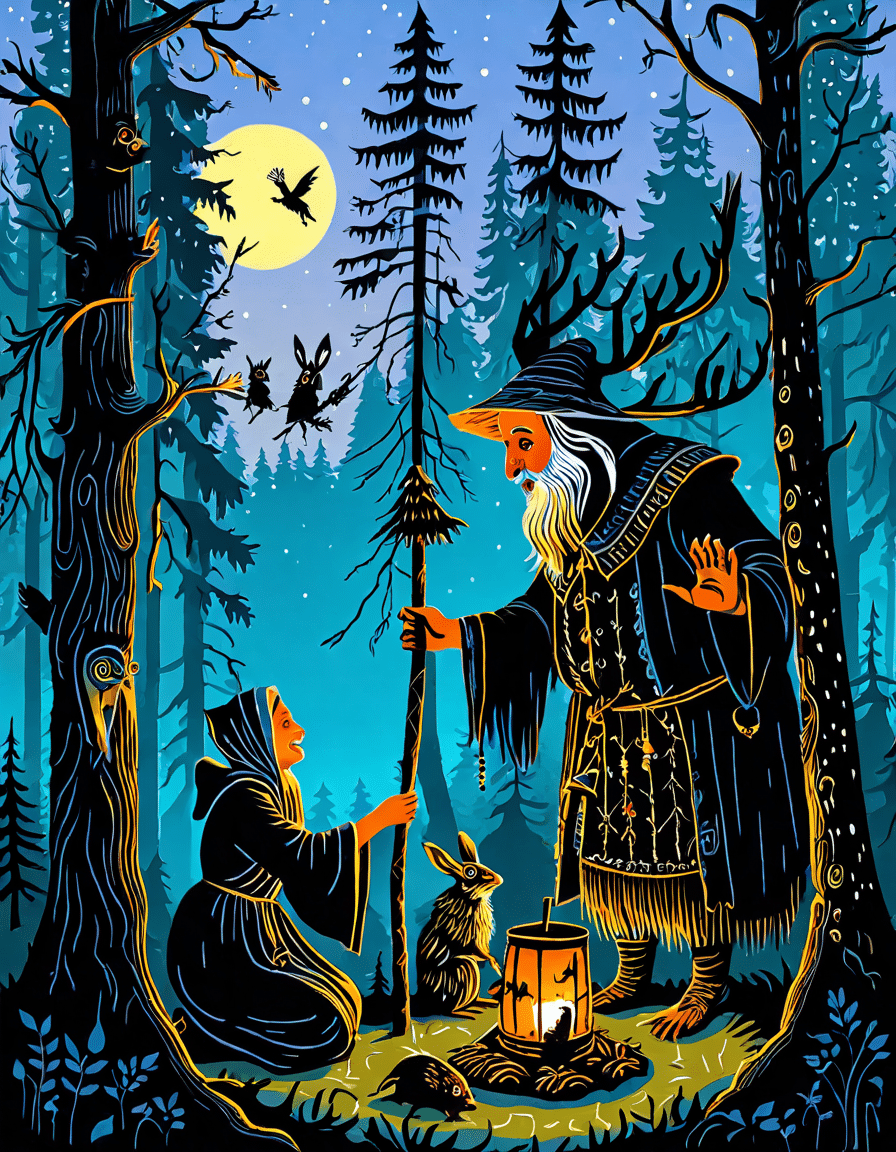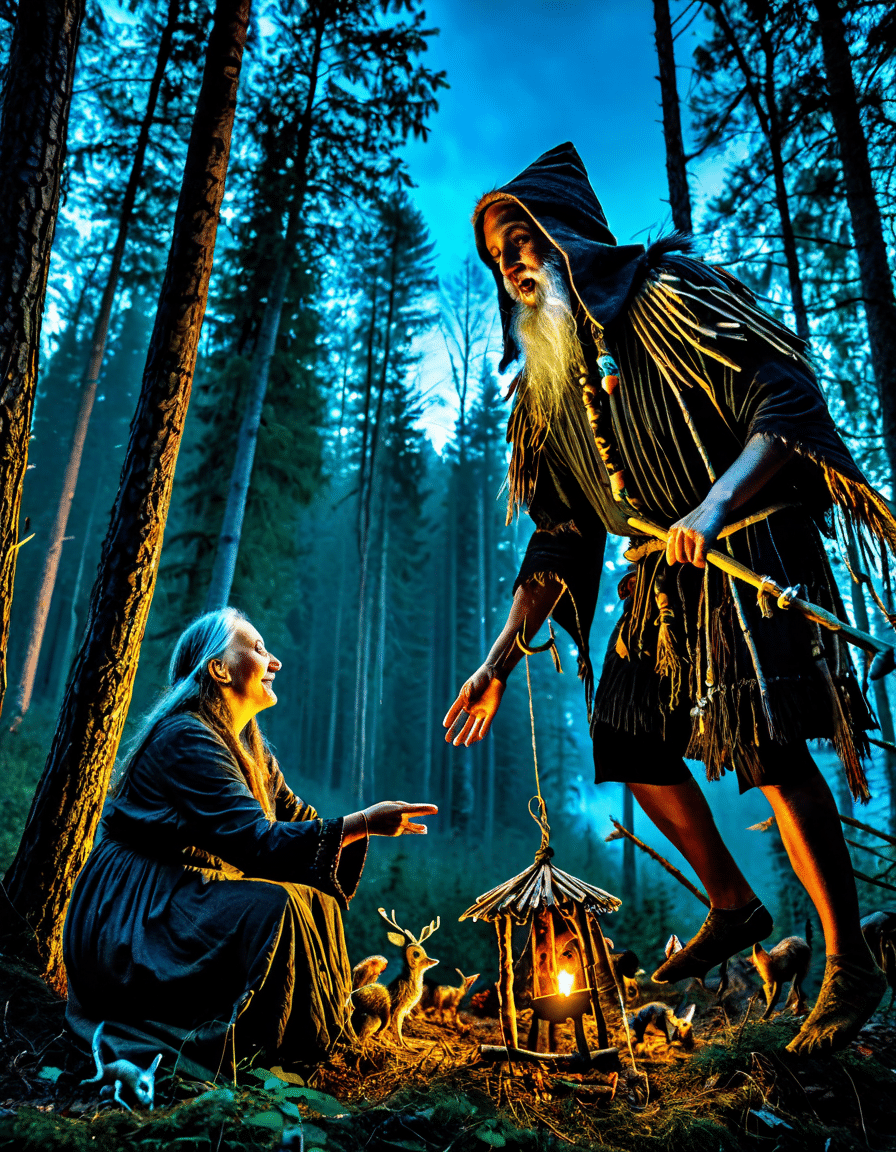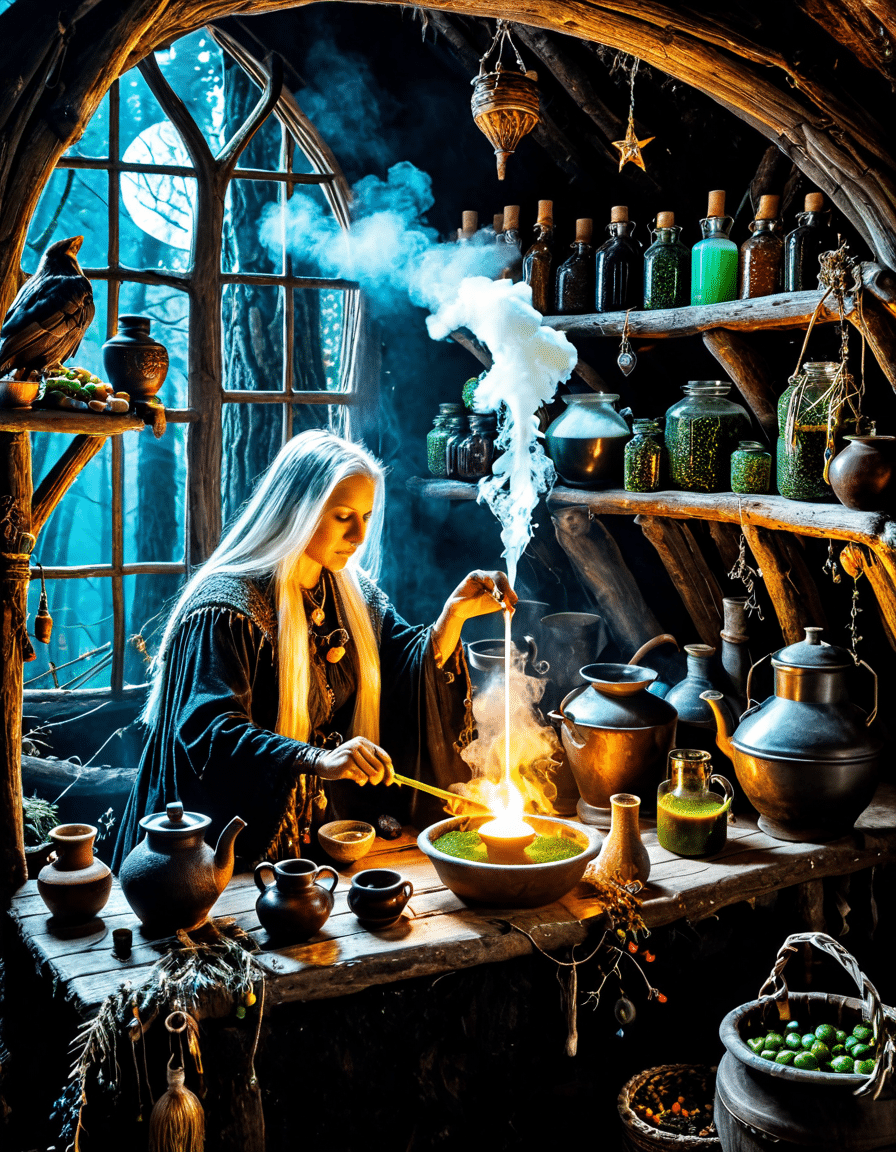When we think of folkloric witches, Baba Yaga stands out as one of the most intriguing figures in the narrative whirlwinds of Slavic folklore. This mysterious character, often depicted as an old crone with a penchant for both wisdom and malice, has enchanted audiences and inspired films, books, and art over centuries. Straddling the line between protector and predator, Baba Yaga’s story dives deep into the complexities of human nature, making her a perfect subject matter for movie nerds and casual cinephiles alike. Let’s embark on a journey through her multifaceted character and discover why Baba Yaga remains as compelling on the screen as she is in folklore.

7 Fascinating Interpretations of Baba Yaga and Their Cultural Resonance
1. Baba Yaga and the Law of Contrast: The Stories of Lawrence of Arabia
Just as Lawrence of Arabia showcased a man pulled between two worlds, Baba Yaga embodies the duality of existence. Her tales aren’t simply cautionary but rather teach deeper lessons about balance—a dance between life and death, creation and destruction. In cinematic terms, this is akin to characters like Darth Vader, whose battle with both light and darkness mirrors Baba Yaga’s role in influencing heroes’ destinies. This duality means that each encounter with Baba Yaga, whether in a film or a story, challenges both her and her protagonists to confront their deepest fears and desires.
2. Baba Yaga as a Feminine Archetype: Catherine the Great and Feminine Power
Catherine the Great is celebrated for redefining femininity in a patriarchal society, much like Baba Yaga embodies feminine power in her own right. Unlike your typical witch, Baba Yaga isn’t just a malevolent force; she rules over her domain with authority, independence, and a hint of dark humor. These traits echo in modern films that challenge gender norms—like “Wonder Woman” or “Frozen”—where female characters defy traditional roles. Baba Yaga’s legacy as a formidable figure opens up a dialogue on the strength found in feminine narratives, proving that folklore can be a lightning rod for discussions about womanhood today.
3. The Journey of the Hero: Baba Yaga in the Context of Luke Skywalker
Baba Yaga’s role in stories often parallels that of Luke Skywalker—a formidable mentor figure but also a test that heroes must overcome. When characters venture into Baba Yaga’s realm, they face trials that transform them, much like Luke’s journey through trials in “Star Wars.” This relationship highlights essential themes in storytelling: the importance of facing one’s fears, learning from challenges, and ultimately emerging as a stronger individual. The cinematic friendships that transform heroes resonate closely with the tales of Baba Yaga, encouraging audiences to reflect on their journeys.
4. Gothic Elements of Baba Yaga: Parallels to Wuthering Heights
The atmosphere of Wuthering Heights teems with an eerie, emotional intensity that is also alive in Baba Yaga’s stories. Both narratives immerse the audience in the exploration of dark emotional landscapes, where the supernatural becomes a reflection of inner turmoil. Characters in both worlds grapple with love and loss, drawing on the Gothic elements that amplify the human experience. Spotting these parallels serves as a fun exercise for fans of gothic literature and cinema, showcasing the timelessness of age-old tales.
5. Baba Yaga and the Mystique of Rasputin
The enigmatic nature of Rasputin mirrors the fear and admiration surrounding Baba Yaga. Both figures evoke a sense of mysticism, with their powers challenging established norms and sentiments. Just as Rasputin’s legend suggests he could sway the fates of empires, Baba Yaga’s presence in stories often influences the course of heroes’ journeys. This relationship underscores how legends thrive in the unexplained, blending fear with an awe that beckons us to explore the unknown.
6. The Symbolism of the Albatross: Ancient Beliefs and Baba Yaga’s Spread
The albatross, a powerful symbol of fate and fortune in various myths, finds a kindred spirit in Baba Yaga. Both figures navigate the unpredictable nature of life, serving as reminders of our interconnections with fate while simultaneously urging us to accept the lessons that emerge from adversity. This connection offers a refreshing twist on genres frequently highlighted in contemporary cinema.
7. Confronting Greatness: Baba Yaga and Alexander the Great
Just like Alexander the Great faced countless trials on his path to legend, the heroes in Baba Yaga’s tales find themselves confronted with challenges that test their resolve and courage. Both stories prompt readers to ponder what it means to achieve greatness. This theme resonates through modern strategies in filmmaking about ambition and struggle, reflecting how characters like Baba Yaga shape greater narratives.

The Legacy of Baba Yaga in Modern Culture
Baba Yaga has cemented her place beyond folklore, emerging in contemporary films, literature, and even video games. Each adaptation presents her as a character both powerful and wise, speaking to the complex dynamics of womanhood and moral ambiguity. With titles like “ exploring dark themes, one can see echoes of how Baba Yaga’s characteristics adapt to fit new storytelling molds.
Transformative Storytelling
The retelling of Baba Yaga is anything but static. Wherever her image pops up—be it in recent depictions in films or creative projects like the “American Horror Story” (AHS) Season 12—she often transcends the label of merely being a witch. Instead, filmmakers and writers cast her in shades of resilience and wisdom. This evolution invites a new generation to unwrap the complexities and nuances of her character.
A Reflection on Folklore and Identity
The fluidity of Baba Yaga’s character acknowledges that folklore evolves alongside cultural shifts. When juxtaposed against historical figures—like Catherine the Great for female authority or Alexander the Great for ambition—it becomes clear that these narratives reflect both the fears and aspirations of their times. Baba Yaga remains relevant because her stories continue to inspire conversations about identity, power, and human experience, enticing movie lovers to delve deeper into the meaning hidden in her tales.
Ultimately, Baba Yaga emerges as someone more than just a witch in the woods; she’s a timeless teacher encouraging us all to embrace the mystery within ourselves. So, whether you’re browsing through streaming platforms for the latest adaptations of Baba Yaga or revisiting classics with her iconic broomstick, this enigmatic figure remains a captivating mystery in the folklore landscape—one we can’t seem to resist exploring further.
Baba Yaga: The Enigmatic Witch of Slavic Folklore
Unraveling Baba Yaga’s Origins
The character of Baba Yaga is as rich and multilayered as Slavic folklore itself. This mysterious witch often changes roles, swinging from a menacing figure to a wise old crone who dispenses advice. Her iconic hut, set on chicken legs, is said to dance away from intruders, much like the crafty escapes in tales of wits and survival—reminding us of the twists in stories like 30 Days Of Night, where darkness hides unexpected dangers. Interestingly, Baba Yaga is often portrayed as a guardian of wisdom, only granting help to those she deems worthy or clever enough to pass her tests. This mirrors the intricate relationships we see in discussions among friends or group dynamics, a bit like how We’re Not Really Strangers dives into profound connections.
Baba Yaga’s Cultural Footprint
Baba Yaga’s influence stretches across various cultures and mediums, paving the way for adaptations and reinterpretations. For instance, her character’s traits can be observed in modern films, where witches and enchantresses often echo her chaotic and unpredictable essence. In the same vein, much like the stark contrasts in Nocturnal Animals, Baba Yaga embodies the duality of nurturing and threatening forces. Interestingly, her tales are imbued with moral lessons, cautioning against deceit and irresponsibility—something that resonates with contemporary audiences seeking meaningful narratives. Perhaps that’s why her story remains captivating, drawing in enthusiasts from all walks of life.
Baba Yaga’s Modern Relevance
Today, Baba Yaga has been reimagined in various forms of media—whether it’s a nod to her eerie wisdom in a sleek horror film or a behind-the-scenes connection to popular culture. Celebrities, like Barbara Hsu, sometimes draw inspiration from such iconic figures in their work, reflecting on the age-old tales and contextualizing them in today’s society. Moreover, just as unexpected events can bring challenges, like the unsettling romaine lettuce e Coli outbreak, Baba Yaga teaches us that there’s often more beneath the surface, waiting to be discovered. Her narrative not only provides historical insight but keeps us questioning and engaging with themes of survival and resourcefulness.
Baba Yaga remains a powerful symbol, casting her spell over audiences old and new. As her stories continue to evolve, like the perennial allure of Smashing Pumpkins tracks, we find comfort in the timelessness of her character, echoing familiar struggles and triumphs. So whether she’s a fearsome witch or a wise guide, the allure of Baba Yaga is here to stay, and who knows what new interpretations might spring to life next?





